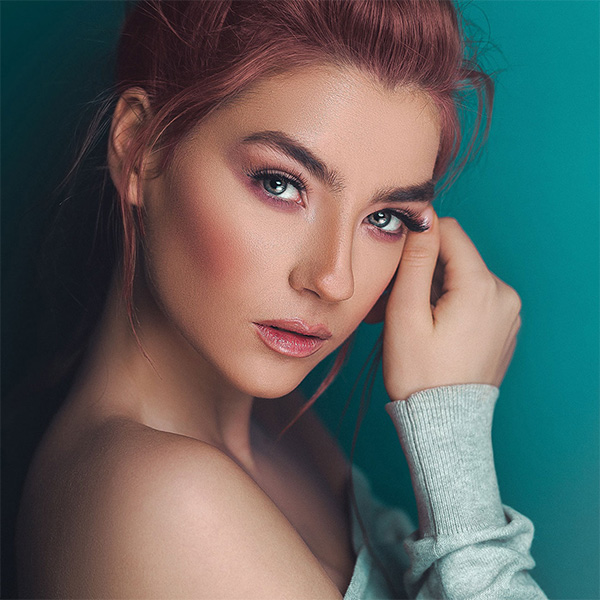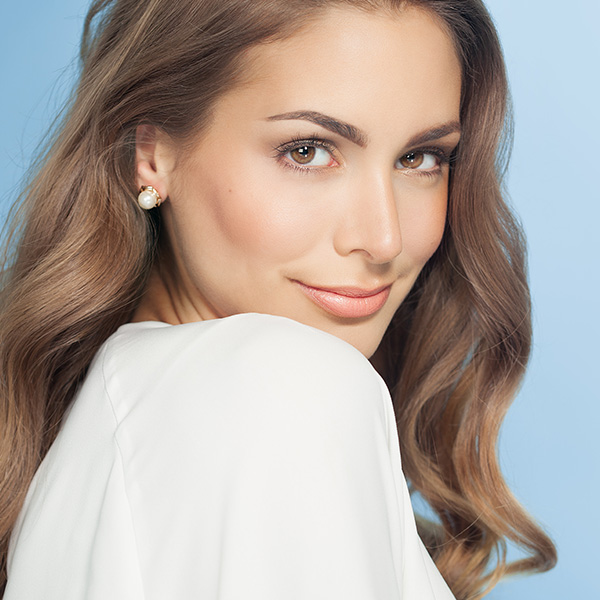Blepharoplasty
Cosmetic Eyelid Surgery in West Michigan
The eyelids are one of the first features of the face that betray our age. Blepharoplasty is used to revitalize the appearance of the eyelids and can dramatically improve the appearance of the whole face. Blepharoplasty accomplishes this by a combination of removal of loose, excess skin and the reduction of the eyelid fat pads. The goal of any facial cosmetic procedure is always to make the patient look more refreshed without looking surgically altered.

Why Get a Blepharoplasty?
Some people have eyelids that sag or droop, which can make a person look older or tired. Sometimes, drooping eyelids can restrict vision, and surgery can be helpful. Other patients prefer to get upper eyelid blepharoplasty to improve and rejuvenate the cosmetic appearance of the eyelids.
Patients who have lower eyelid blepharoplasty often do so to address the loose lower eyelid skin and bags. The procedure removes fat and/or skin, which can reduce puffiness and remove wrinkles. For some patients, this procedure can also be used to reposition the lower eyelid bags, using the fat to fill out the hollow between the eyelid and cheek; also known as the tear trough.
What Happens During a Blepharoplasty?
Blepharoplasty is performed using either general anesthesia or sedation. When it’s performed on the upper eyelid, incisions are placed well within the upper eyelid crease in order to remove fat and skin from the eyelid area. Once completed, the incision is only appreciated when the eye is closed. The scars frequently fade out completely over time.
When this procedure is performed on the lower eyelid, the surgeon makes incisions on the skin either on the inside of the lower lid or on the skin underneath the lower eyelashes. Incisions on the inside of the eyelid can help minimize the appearance of the incisions after surgery. Once these are made, fat is then repositioned and/or removed to rejuvenate the lower eyelid contours and transition it with the cheeks. Sometimes blepharoplasty procedures are used in combination with eyelid resurfacing to reduce the appearance of wrinkles and fine lines.

Results and Recovery
A blepharoplasty requires a short period of recovery and downtime in order for your results to be maximized. Plan to take 1-2 weeks off work to properly recover and allow any bruising to resolve. Dr. Dodde will provide you with your personalized after care instructions, along with any restrictions you should know about. After your procedure, some temporary swelling around the eyes and bruising can be expected. An over-the-counter pain medication and ice pack can help control any discomfort you might feel.
Be sure to avoid strenuous activity, eye makeup, and contacts for the first few weeks after your surgery. Sun protection must be worn during the healing process for optimal results. Once your eyelids have healed, you can enjoy your rejuvenated appearance with eyes that seem more youthful and awake. The results of upper and/or lower blepharoplasty can be very durable if good postsurgical skin care is maintained.
Are You a Good Blepharoplasty Candidate?
You may be a good blepharoplasty candidate if you have the following traits:
- You have excess tissue around the eyes due to age, genetics, or other factors
- You are in reasonably good health
- You have realistic expectations for the outcome of your surgery
- You experience negative effects from drooping eyelids
